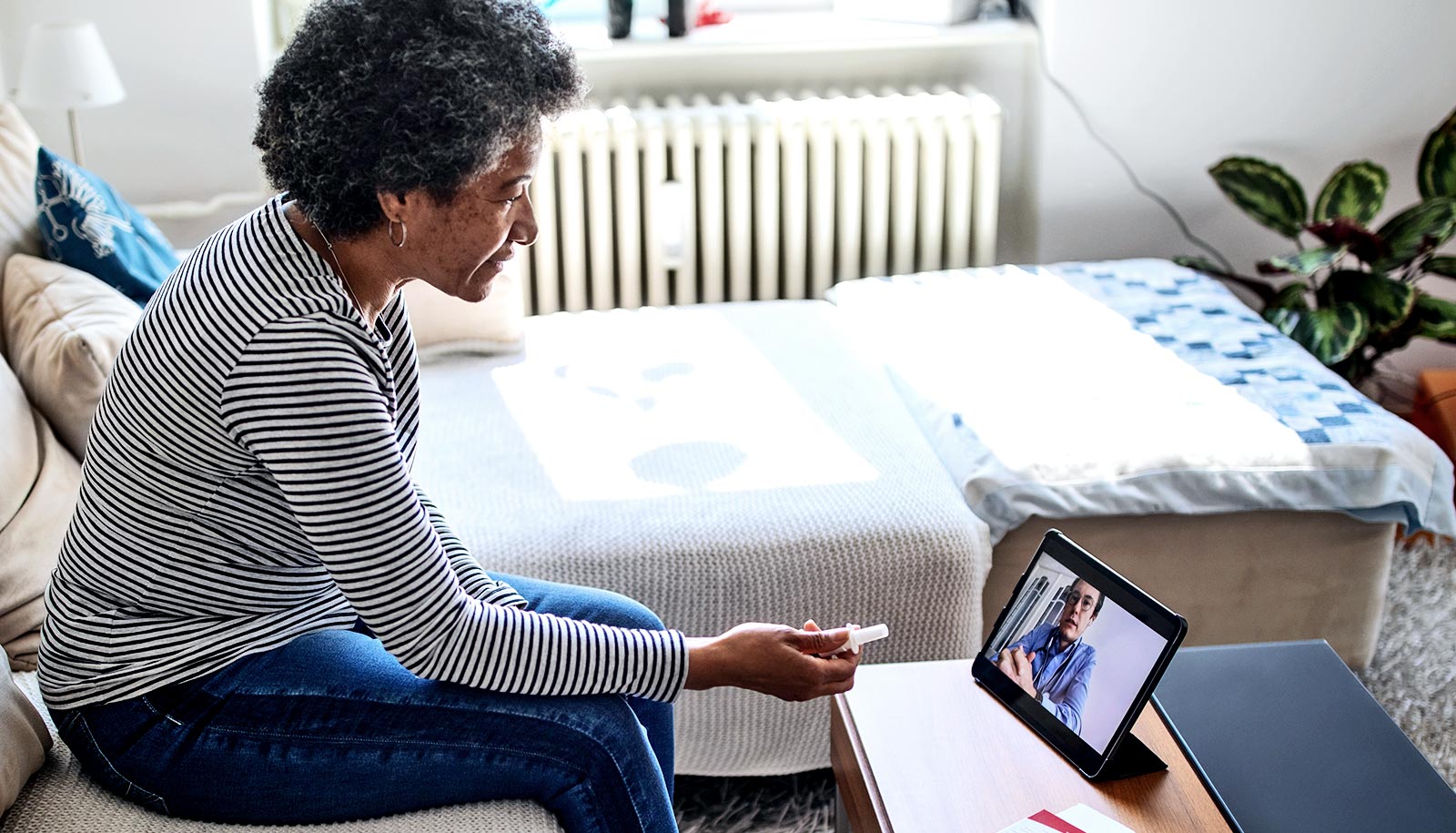The COVID-19 outbreak has significantly affected how therapists deliver health services, which had to move from in-person therapy to remote telehealth, researchers report.
For a new study in Community Mental Health Journal, researchers surveyed 238 behavioral health care providers throughout New York—one of the early epicenters of the pandemic in the US—on the challenges they faced regarding providing services remotely, maintaining safety practices in person, and the ability for clients to use technology to receive services, which are often more effectively provided in-person.
“Understanding this impact is particularly important as these services support vulnerable populations that may be at higher risk for coronavirus infection as well as other negative consequences,” says lead author Kenneth Gill, chair of the department of psychiatric rehabilitation and counseling professions at the Rutgers School of Health Professions.
Here, he discusses his findings, including the big stressors for both patients and providers:
What are the challenges to patient care?
The most significant change was the move away from in-person, face-to-face contacts and the increased reliance on telehealth.
The lack of in-person meetings made intakes, comprehensive assessments, and engagement with clients more difficult. Some clients did not want to engage with staff by phone or video.
Additionally, some clients refused remote services and others failed to answer the phone for scheduled appointments. Lack of in-person services also presented challenges around medication monitoring and administering injectable medications.
The reliance on telehealth has highlighted the digital divide that exists for people with lower socioeconomic resources, those with disabilities, and those who live in rural areas. A big issue was client access to technology and reliable internet services. Many also had limited cell phone plans, which made even phone appointments difficult.
A recent Pew Research report showed that people with disabilities, including psychiatric disabilities, are three times more likely to report never going online and about 20% are less likely to own electronic devices such as tablets, smart phones, and computers or have home broadband services. The pandemic has highlighted the need for increasing access to technology for people who are unable to take full advantage of remote and telehealth services.
However, if the digital divide can be bridged, telehealth services may be able to provide opportunities to promote wellness and recovery more broadly. Potentially, telehealth is an effective way to reach people who have limited accessibility due to geographic location, health concerns, transportation, and time constraints.
How did the transition to telehealth affect the delivery of services?
The transition to telehealth brought many financial challenges, including revenue loss due to a reduction in services, increases in staff overtime pay, increased expense of purchasing personal protective equipment, an inability to forecast the upcoming budget year, and uncertainty regarding billing insurance for remote services. Operations were also impacted by staff shortages due to layoffs, sick leave or personal reasons, changing regulations, and remote working.
Staff had to learn telehealth technology quickly and expressed frustration with having technology issues and lack of access to HIPAA-compliant platforms. They also noted that “something was lost” by not being able to share the same physical space with a client, which negatively impacted engagement and the therapeutic process.
The limited availability of technology and the lack of staff skill in using that technology to deliver services are areas begging for research and development.
What were behavioral health care staffs’ main concerns regarding clients?
Staff were concerned about clients meeting basic needs, such as nutritious food and stable housing. These challenges can lead to an increase in psychiatric issues such as depression and anxiety and substance use, including overdose deaths.
Understandably, some clients, fearful of contracting the virus, refused to use services that remained open. Staying at home raised additional concerns regarding increased social isolation and losing connection with family, friends, and regular routines.
What were the safety concerns for staff?
Staff concerns about contracting the virus was a significant concern. Many respondents reported shortages of PPE, cleaning and sanitizing products, and a difficulty developing, implementing, and reinforcing safety protocols to reduce the risk of virus transmission, especially in residential and inpatient treatment settings. There was also limited access to testing for staff and clients.
Residential providers and inpatient facilities found difficulties in offering safe quarantine to clients who tested positive while maintaining the health of other clients and staff. In these facilities—as well as in other programs that had to maintain some in-person activities—safety concerns were prominent. Efforts were made to reduce risk, but fears remained. Education and skills instruction to clients regarding proper hygiene, social distancing, and face coverings remain essential.
The death of both clients and staff contributed to these fears and added grief and loss to the challenges experienced.
What other stressors did staff experience?
There was a significant emotional toll on behavioral health staff due to the increased work demands, required adaptations, and anxiety and stress related to the pandemic. According to our survey, the lack of in-person interaction with colleagues and the support provided by coworkers can further exacerbate this distress.
As the pandemic evolves, it is important to develop alternative strategies to support staff, such as increased clinical supervision, group peer supervision, staff wellness initiatives, and technology training and support.
Source: Rutgers University



